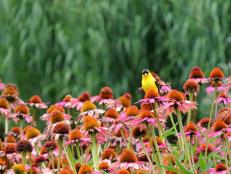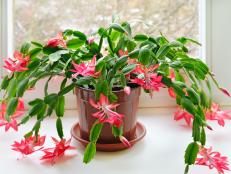The 13 Different Types of Mums and Why We Love Them All
Meet the 13 official types of chrysanthemums and find a new variety for your garden or floral arrangement.

Shutterstock / Irina Malikova
The 13 classes — or types — of chrysanthemums come in a variety of shapes, sizes and colors, and can be used as annuals or planted as perennials.
You know it’s officially fall when potted mums start popping up in garden centers. Chrysanthemums (Chrysanthemum), better known as mums, come in a variety of shapes, sizes and colors and can be used as annuals or planted as perennials in a sunny spot, to be enjoyed year after year.
Mums are a member of the composite family, which includes asters, sunflowers, daisies and feverfew, like the cheerful 'White Stars' shown above. Ideal for borders and containers, this pretty bloom resembles its kin, the Anemone Chrysanthemum.
How To Grow Chrysanthemums
Mums can give you color until the cold comes. Here’s how to make the queen of autumn gardens thrive.
What sets composites apart? Their flower heads look like one, large bloom, but in one of nature’s interesting twists, they are actually comprised of tiny, individual flowers. The central disk makes up one set of flowers and is surrounded by an array of petal-like blooms, called ray florets.
Did You Know There Are 13 Different Types of Mums?
The National Chrysanthemum Society classifies 13 types of mums. According to the New York Botanical Garden, garden mums are "often hybridized for cut flowers or bred to be hardy, compact and floriferous." Here’s an overview of the 13 varieties.
Class 1 — Irregular Incurve Chrysanthemums
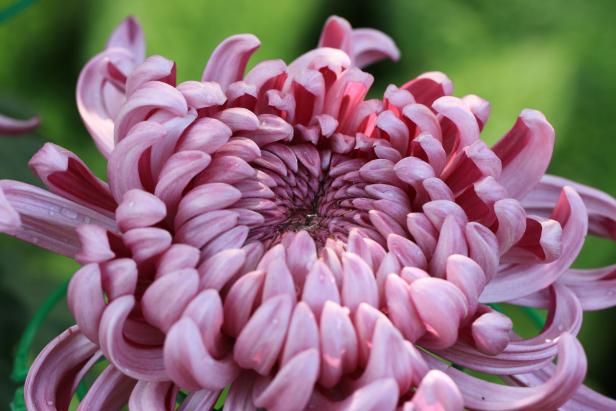
Shutterstock / happykamill
Irregular Incurve mums have top florets that loosely curve into the middle of the plant, while the lower ones fall like a skirt in an irregular pattern. The largest of the mums, these queens of autumn can span 10 inches in diameter and grow to 4 feet tall. Try one of these types: 'Bola de Oro', 'Kokka Bunmi' or 'Jefferson Park'.
Class 2 — Reflex Chrysanthemums
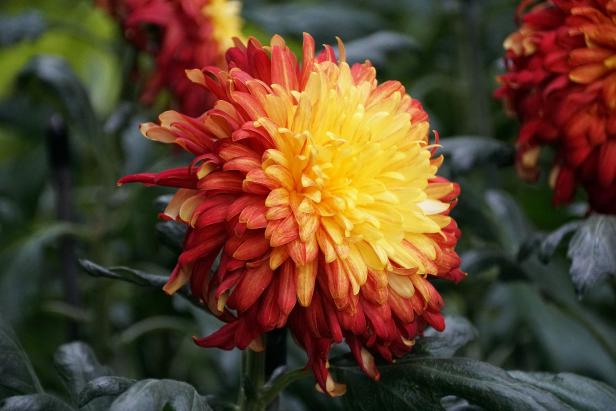
Shutterstock / Khairil Azhar Junos
Reflex mums earned their name from petals that curve downward and overlap. As a result, they resemble bird plumage or charming mopheads. Choose bold, red 'Samson'; peachy 'Apricot Courtier' or the Halloween-perfect orange 'Paint Box'.
Class 3 — Regular Incurve Chrysanthemums
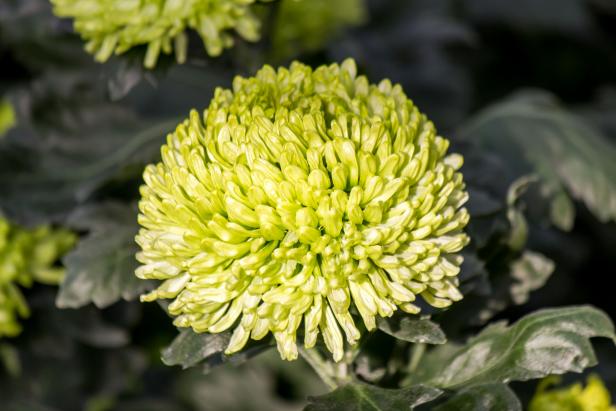
ntrirata
Regular Incurves are the ones most people recognize from traditional football corsages. These plants grow tall and form large, ball-like blossoms with incurving petals. For a peep at a perfect, ball-shaped mum, check out 'Primrose Tennis' or 'Rosedew.'
Class 4 — Decorative Chrysanthemums

Shutterstock / Thanate Rooprasert
Most of the mums you pick up at the garden center fall into the Decorative category. This common class has a flatter shape than the first three types, with short, incurved florets and reflexed (down-bending) lower ones. Bred to be hardy, these mums bloom from summer to fall. Many gardeners use this perennial as an annual to fill in beds or borders. If you’d like to grow from seed, look for a "Garden Mums" seed pack.
Class 5 — Intermediate Incurve Chrysanthemums
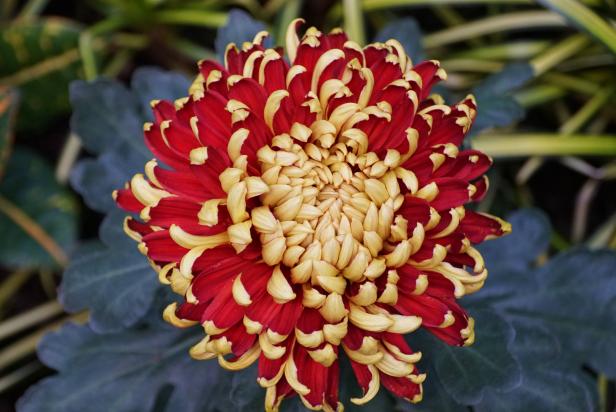
Shutterstock / Khairil Azhar Junos
These smaller mums fall somewhere between the Irregular and Regular Incurves in shape and size. But what sets them apart are the shorter, less densely packed florets, which gives them a friendly, open appearance. The type shown above, 'St. Tropez', displays how colorful these flowers can be.
Class 6 — Pompom Chrysathemums
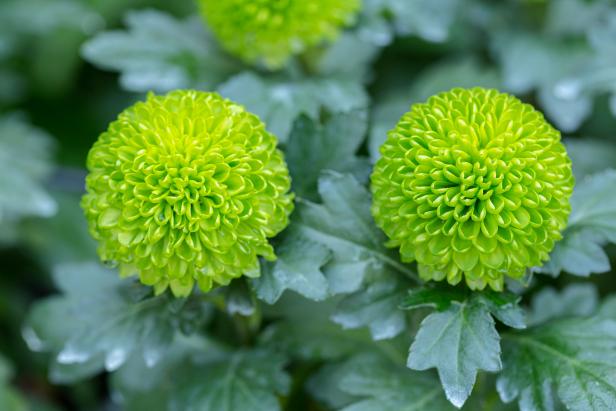
Shutterstock / Old Man Stocker
The adorable Pompom class looks like something out of a Dr. Seuss book. It has a small, flat, globe-like bloom, that is either incurved or reflexed in a regular pattern. They range from 1 to 4 inches, making them an appealing addition to flower arrangements and containers. Want some green pompoms? Try 'Kermit' or 'Feeling Green'.
Class 7 — Single and Semi-Double Chrysanthemums
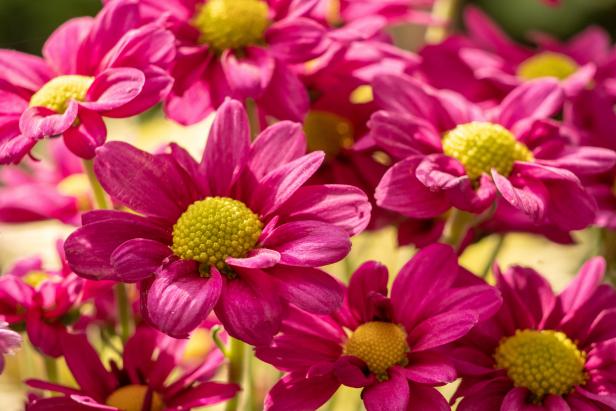
Shutterstock / Jolanda de Jong-Jansen
This daisy-shaped mum is similar to other plants in the composite family like asters, daisies and sunflowers. The central disk is surrounded by between one and seven rows of ray florets, giving them a rustic, happy look. Try the daisy-like 'Donna' or 'Chidori'.
Class 8 — Anemone Chrysanthemums
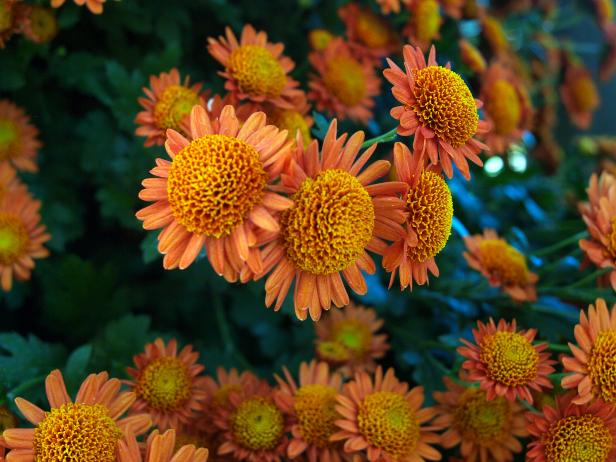
Amy Wilkins
Named after sea anemones, Anemone mums have a raised center that might remind you of a pincushion. Their flowers can be small or large with a petal pattern similar to semi-double mums. They bloom mid-fall, so use them as a late-season color burst in the garden. Look for the eye-popping white 'Vesuvio' or the fuchsia 'Shock'.
Class 9 — Spoon Chrysanthemums
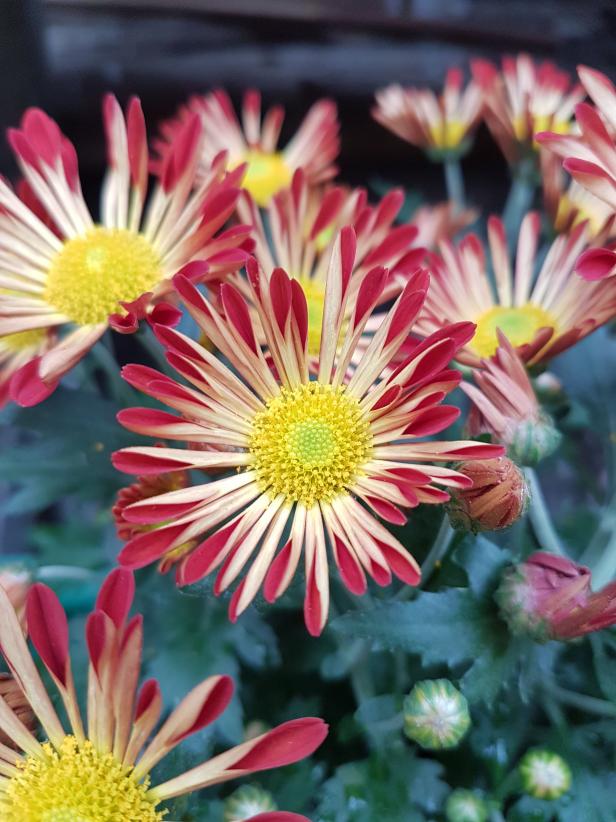
Shutterstock / HANIS124
Once you see a Spoon mum, you’ll instantly understand that it got its name from its spatulate rays. It’s impossible to fully regret summer’s passing when you can fill a container with spoon-shaped flowers. Types to explore: 'Matchsticks' (similar to the photo above) or 'Maryl'.
Class 10 — Quill Chrysanthemums
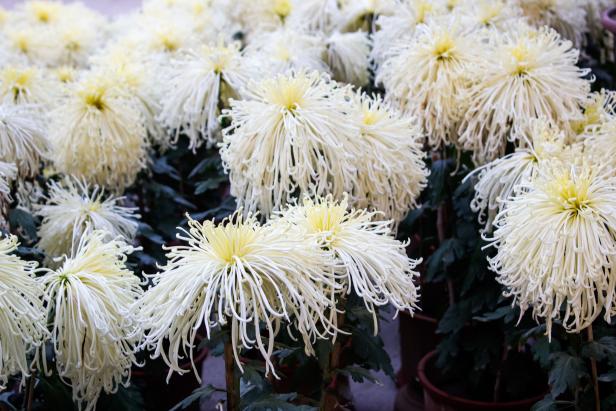
chenp
Quill chrysanthemums have long, straight, tubular florets with open tips that will make you think of feather quills. Fill in an empty spot in your garden with these tall, mounding mums — they’ll grow to nearly 3 feet and bloom late summer through early fall. If you like the photo above, check out 'Shaman’s Vision' or 'King’s Delight'.
Class 11 — Spider Chrysanthemums
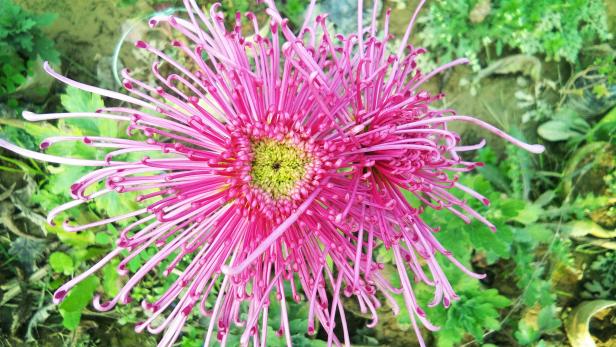
Shutterstock / Banonili
Lacy, delicate Spider mums sport long, tubelike florets with a coiling end. They fall in a loose mass that looks almost like a fireworks display, making them a garden centerpiece. They’re also long-lasting cut flowers (up to three weeks if the ends are trimmed and water is changed) and add complexity and texture to arrangements. Try yellow 'Equinox', 'Senkyo Kenshin' (a dark peach center with light peach rays) or the striking mauve 'Seaton’s Galaxy'.
Class 12 — Brush and Thistle Chrysanthemums
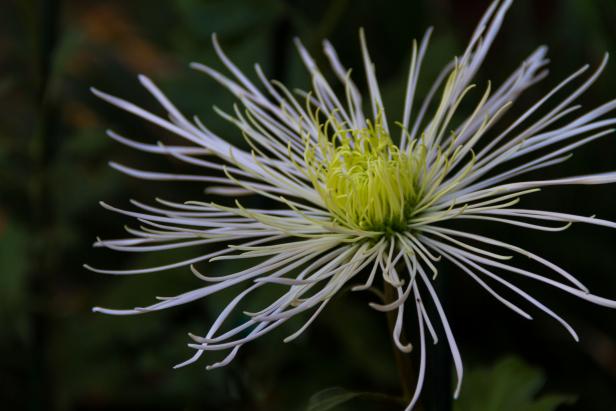
Sara Edwards
If you’re looking for a delicate mum, try the Brush and Thistle. The fine florets grow upright, while the thistle florets fan out horizontally or twist around the stem. The Japanese, who are known for their love of mums, call these broom flowers. Try 'Wisp of Pink' or the broomlike 'Saga No Yuki'.
Class 13 — Unusual (a.k.a. Unclassified or Exotic)
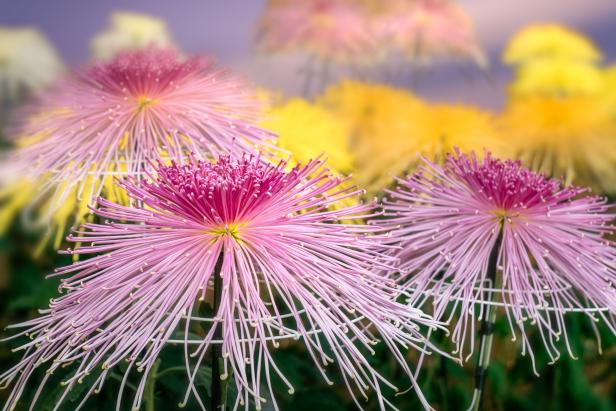
Shutterstock / Daniela Constantinescu
Blooms that don’t fit any other class earn the moniker Unusual, aka Unclassified or Exotic. These striking flowers can be flat, quill-like or spatulate, and they often take on characteristics of the other classes. You usually find these at mum shows since they require special care. The cultivar 'Satin Ribbon' looks like ribbons trailing off a gift box.
Explore the wonderful world of garden mums. These hardy flowers boast variety in color and shape. By using different types of mums, you can add texture and color to your fall landscape.








